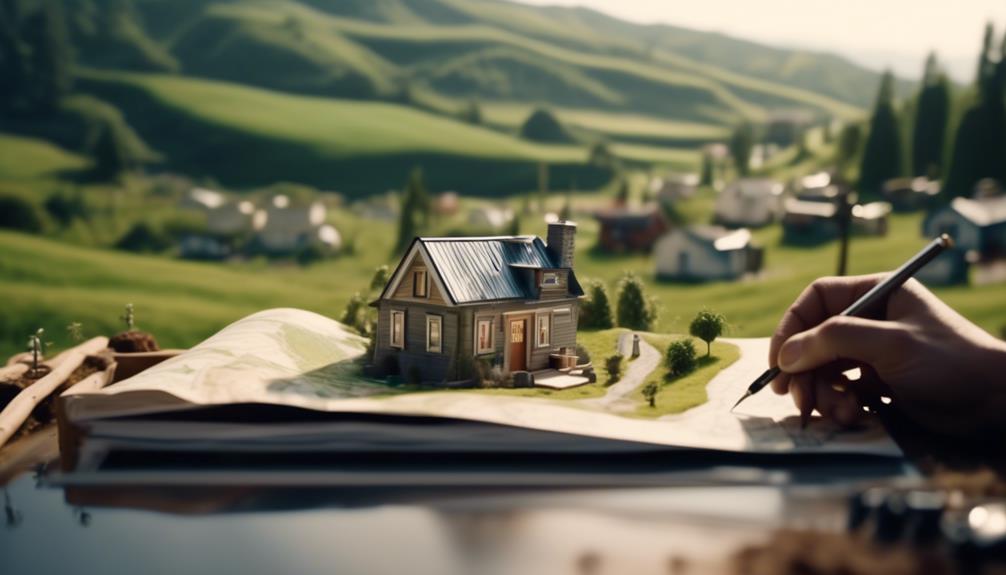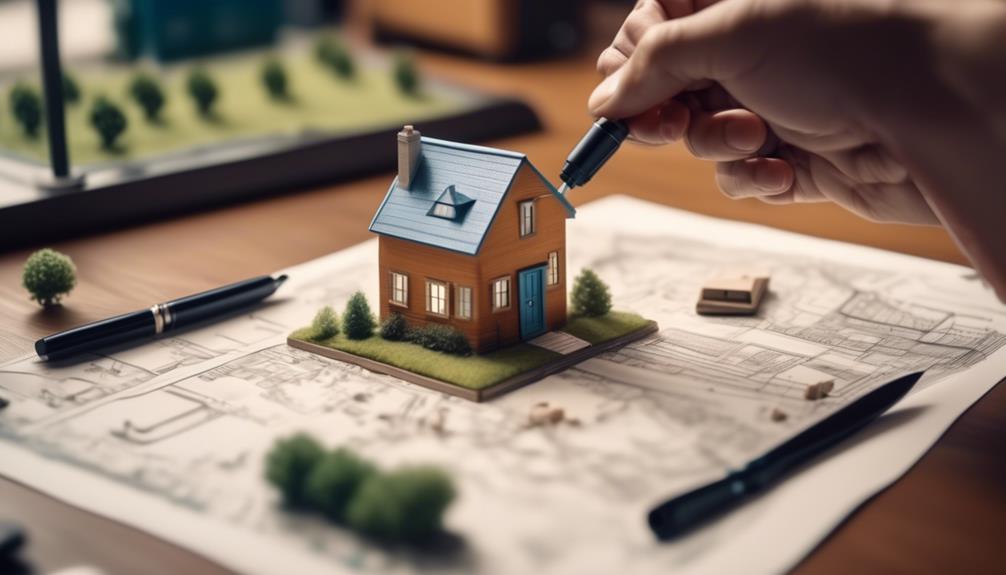As the saying goes, 'Home is where you lay your hat,' but when it comes to anchoring your tiny home, the hat stand must be chosen with utmost care.
You're about to embark on a journey that not only demands a keen eye for the idyllic scenery but also necessitates a thorough understanding of zoning laws and land use regulations.
As you weigh your options, you'll need to consider the accessibility of utilities, the lay of the land, and the true cost of making your tiny abode a reality.
It's a path lined with potential pitfalls and surprising complexities, and you'll want to be well-informed before you plant your roots.
What you'll find in the following conversation is a trove of insights and guidance that could mean the difference between a dream realized and a lesson learned.
Keep in mind, the ideal spot isn't just about the view from your window—it's about making sure your tiny haven stands on solid ground, legally and literally.
Key Takeaways
- Research local building codes and zoning laws to ensure compliance and avoid potential issues.
- Thoroughly evaluate the land's suitability for your tiny home, considering factors such as accessibility, utility availability, and infrastructure connections.
- Engage with the planning department and local authorities to gain a better understanding of zoning regulations and any specific requirements for your tiny home.
- Seek professional guidance, such as from a real estate expert, to navigate the land purchasing process and accurately estimate development costs.
Assessing Land Suitability
When selecting the ideal plot for your tiny home, it's crucial to diligently research local building codes and zoning laws to ensure the land meets your specific needs. Investigate the property's land suitability, ensuring it aligns with local zoning requirements and building standards. Consider the availability of water and other essential utilities.
Engage with the planning department to understand the nuances of raw land development. Don't overlook land for sale that may offer innovative approaches to tiny living. Whether you're buying outright or considering a lease, a strategic approach to assessing zoning laws and building codes will save you time and resources.
Stay informed and proactive in your search to secure a land that not only permits but enhances your tiny home aspirations.
Understanding Zoning Regulations
Navigating zoning regulations is a critical step in ensuring your tiny home dream becomes a reality, as these laws determine where and how you can legally build and place your residence. As you embark on your land search, remember:
- Building codes regulate construction for your safety. Ensure your tiny home meets these requirements.
- Specific rules vary by location; city governments can guide you through Living Tiny Legally.
- Engage a real estate professional; they're key allies in navigating the intricate web of zoning regulations.
- Consider water and power access—these are essential and might be influenced by zoning.
Buying Land for your tiny abode is a thrilling process, but don't let your enthusiasm cloud the importance of due diligence. Connect with property owners, professionals, and local authorities to make an informed, innovative, and legally sound choice.
Evaluating Access and Utilities

Having grasped the importance of zoning regulations, your next step is to thoroughly evaluate the accessibility of utilities such as water and power, pivotal for establishing a functional tiny home. When you find property that seems like the perfect plot, consider the upfront costs and logistics of connecting to city water or creating your own systems.
| Utility Consideration | Impact on Tiny House Land |
|---|---|
| Access to City Water | Reduces complexity of setup |
| Sewage Management | Dictates sustainable options |
| Power Connectivity | Influences energy independence |
| Zoning Compliance | Ensures legality of utilities |
Always verify local building laws to ensure your tiny house land complies with all regulations. Evaluating access and utilities is not just about convenience; it's about securing a sustainable and innovative future for your tiny home.
Estimating Development Costs
Before diving into the creation of your tiny home, it's crucial to meticulously estimate development costs. This includes considering factors such as land preparation, building materials, and essential infrastructure like power and water connections. Understanding these costs is key to a successful tiny house living experience.
Here are the elements you need to consider:
- Land Preparation: Clearing and leveling your plot of land can be costly, especially if it's undeveloped.
- Building Codes Compliance: Local laws may require specific standards that affect your budget.
- Infrastructure Connections: Access to power and water is essential but can be expensive to install.
- Professional Guidance: A real estate expert can provide valuable insights to navigate red tape and estimate accurately.
Investing time in these areas will ensure you find land for a tiny home without unexpected financial surprises.
Navigating Land Purchasing Process

With a firm grasp on development costs, you're now ready to tackle the land purchasing process, a critical step for securing the foundation of your tiny home dream. As you embark on finding land, it's essential to consider both zoning laws and building codes, which can vary widely. Connect with a local real estate expert who understands the tiny house movement and can guide you through the intricacies of the market.
| Consideration | Why It's Important |
|---|---|
| Zoning Regulations | Ensures your tiny home is compliant |
| Utility Access | Determines livability and cost |
| Community Networks | Connects you to available small lots |
Frequently Asked Questions
Where Is the Best Place to Put a Tiny House?
You'll want a location where zoning laws allow, with a favorable climate, accessible features, and affordable land. Ensure strong community connections, utility access, low environmental impact, proper site orientation, reasonable property taxes, and potential for future expansion.
How Do I Maximize Space in My Tiny House?
You'll find that space-saving furniture and multi-purpose fixtures are essential in your tiny house. Opt for lofted beds, magnetic walls, and wall-mounted appliances to maximize space with innovative, convertible designs.
How Many Tiny Houses Can You Fit on 1 Acre of Land if Building a Small Community?
You can typically fit 6-8 tiny houses per acre, considering zoning, community layout, and privacy. Efficient acreage calculation and infrastructure planning are key, along with shared amenities and respecting property boundaries and legal restrictions.
Can I Put an ADU on an Empty Lot?
Can you imagine the freedom? With proper ADU regulations adherence, zoning laws respect, and utility access secured, you're set. Ensure lot size fits, check property setbacks, and understand building codes for a smooth setup.
Conclusion
In your quest for a tiny home, let the land be your canvas, awaiting the delicate stroke of your dream.
Remember, each plot holds its unique symphony of zoning tunes and utilities' rhythm. Consider the financial soil you'll till and the bureaucratic seeds you'll sow.
Navigate the terrain with precision, for the land you choose is more than dirt—it's the foundation of your minimalist masterpiece.
Seize it with care, and watch your tiny haven flourish under your nurturing hand.

